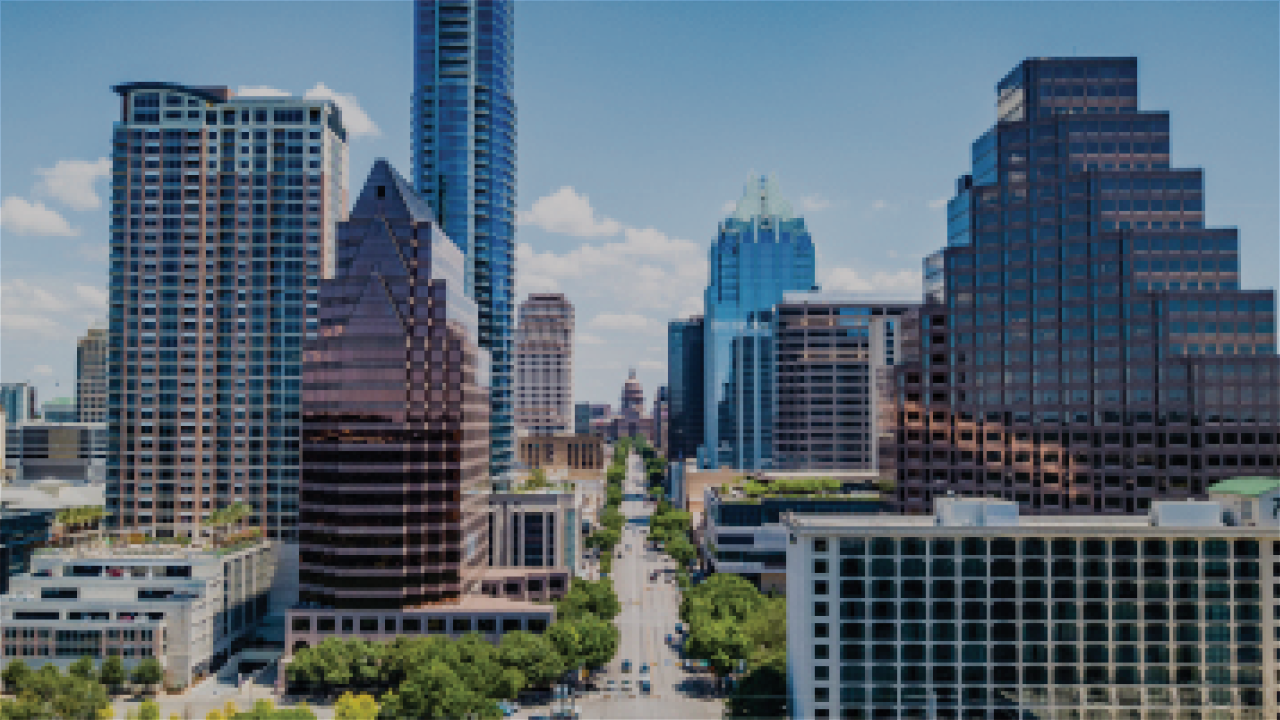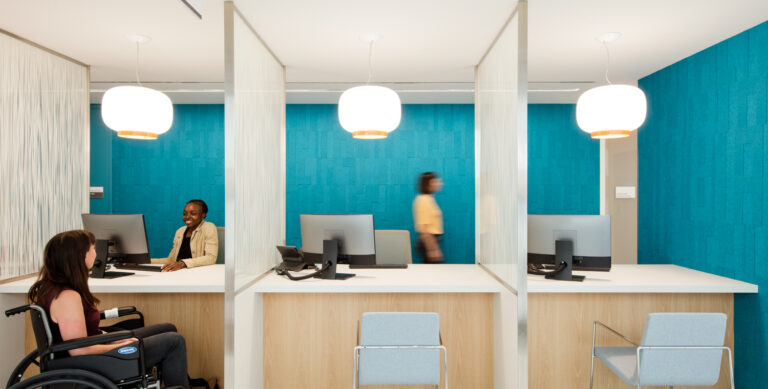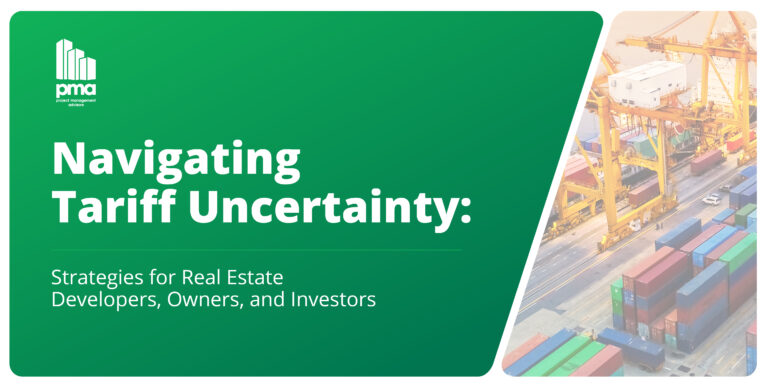Austin’s Housing Market Is Still Packed with Potential

In 2021, The New York Times declared Austin the hottest commercial real estate market in the country. The pandemic fueled a surge in population growth, corporate relocations and job creation, creating a perfect trifecta for commercial real estate investment. The multifamily market in particular has been the major beneficiary of this activity, with rents increasing a staggering 86% from August 2021 to August 2022 and occupancy hitting 95% by the end of Q3 2022. The market has undeniably seen a whirlwind of growth.
Of course, this type of exuberant expansion has a shelf life. Austin fundamentals have already begun to soften. Population gains are slowing and apartment rent growth has started to flatten. In November, for the first time since the start of the pandemic, Austin apartment rents fell 1.2% month-over-month, creating some concern that Austin had already reached its peak—but there are still plenty of reasons to be excited about Austin and confident in the city’s future growth. November’s turn didn’t offset rent gains, which are up nearly 5% for the year, and the city continues to be one of the top markets in the US for migrating talent and corporate expansion.
Investors should take note of a few key trends that showcase Austin’s resilient growth, accelerating momentum and long runway ahead.
Strong demand drivers
Like many metropolises in the Sunbelt, Austin has attracted an influx of new residents looking for attainably priced housing, lower income taxes and a business-friendly environment. Those three factors have been responsible for the tremendous growth over the last decade. Since 2012, Austin’s population has increased 33%, and in the last two years alone, the headcount grew another 3%, according to the Austin Chamber of Commerce.
That growth is forecast to keep pace for the next several decades. This year, the American Growth Project ranked Austin as the second-fastest growing city in the nation, and an analysis of the Texas Water Development Board by CultureMap forecasts that Austin’s population will surpass nearby and currently larger San Antonio by 2040, growing to an estimated 3.35 million residents—roughly the size of San Diego.
Remote work and millennial family planning are both contributing to population growth, but corporate relocations are among the biggest reasons new residents are moving to the area. In 2021, 62 companies across 15 different industries announced plans to move to Austin. In 2022, more companies solidified plans to move, including TikTok, which has leased 126,000 square feet in Downtown Austin, and Parus, which is taking a space in the Austin City Center. These two relocations alone represent hundreds of new jobs for the market. Many of these companies won’t take occupancy in the market until 2023 or 2024, and when they do, their employees will generate new demand for housing in an already tight market. Austin is also a national leader in return-to-office metrics. By November 2020, one-third of Austin workers were back in the office, and this year, the city had the strongest in-office occupancy with 59% of employees back at their desks.
Rising interest rates are also poised to drive demand for rental product. In a higher interest rate environment, prospective homebuyers, many of whom are exiting the renter market, have reduced buying power. It is also driving a gap between mortgages and average rents. Nationally, rents are $564 less than the average mortgage, but Austin residents will pay nearly double in a monthly mortgage payment compared to the average cost of rent. That is driving people back into the rental market.
A flourishing urban core
In Austin, dense, walkable urban core product is the top choice among renters. It is a familiar dynamic. For decades, people, and particularly young professionals without children, have preferred to live in walkable, dense urban environments with access to culture, entertainment and amenities.
For that reason, it’s no surprise that more than three-quarters of all new construction is upscale lifestyle apartment buildings. Austin is the second most active construction market in the country after Dallas, a fact that Berkadia research calls “no small feat, considering its size.”
Nearly every neighborhood in Austin has ongoing construction, and 35 of the 42 submarkets have at least 180 units under construction. Dessau leads new construction activity with 3,187 units underway, followed by Downtown-North Austin with 2,702 units and San Marcos/Kyle with 2,599 units.
Signs of a maturing market
Demand is steadfast, but in any market with substantial new construction, fundamentals will soften as new buildings open. In 2022, developers are estimated to have delivered 18,600 new apartment units in Austin, increasing the multifamily inventory by 6.8%. This is the largest new delivery of apartment units in two decades. Naturally, an onslaught of new development can cause a temporary change in market fundamentals. Owners often increase concessions, slowing effective rent growth, in an effort to lease and stabilize new projects.
Not only is this common in active development regions, but it is also a sign of market maturity, a growing pain as cities adjust to larger populations and build density. Austin is entering a new phase on its way to becoming a core market—and it is not alone. Tampa, Orlando, Nashville and Raleigh are all small cities transforming into thriving metropolises. While rapid urban expansion can cause some temporary turbulence, developers should read it as a sign of growth.
Austin might be experiencing some softening in fundamentals, but a closer look at the market dynamics and population trends reveals strength supported by a deep demand for housing that continues to outpace supply.
Facing new challenges
It is clear that there are plenty of reasons to be bullish about Austin’s long-term runway and status as a primary market, but growing pains are inevitable. Unfortunately, as investor’s representatives, we all too often see manageable challenges deter multifamily investors—but to overlook Austin now would be to miss out on tremendous opportunities. Instead, investors simply need to adapt their acquisition and development strategy to reflect the market’s changing fundamentals.
Local partnerships with development experts are the key to understanding market nuances. This includes developing creative land acquisition and assemblage strategies, negotiating favorable vendor contracts to offset inflationary pressures and rising construction costs, and creating building designs that maximize rentable square footage. A targeted investment and development strategy encompasses new market dynamics, like changing demand and rent trends, while seizing on attractive opportunities to create real value.
It is natural for a market to ebb and flow, but over the long-term, this small but mighty Texas city is only looking up. Mining opportunities may mean more discussion today than it did in Austin’s early growth cycle, but that is a conversation that we are ready to have.
The 3 P’s of Multifamily Project Predictability: Process, People, and Product
Predictability in multifamily development shouldn’t be a nice-to-have; it should be a guiding principle for every project. By applying best practices every step of the way, developers can gain the insights it takes to steer a project to success.





